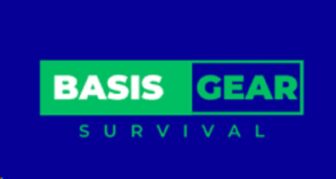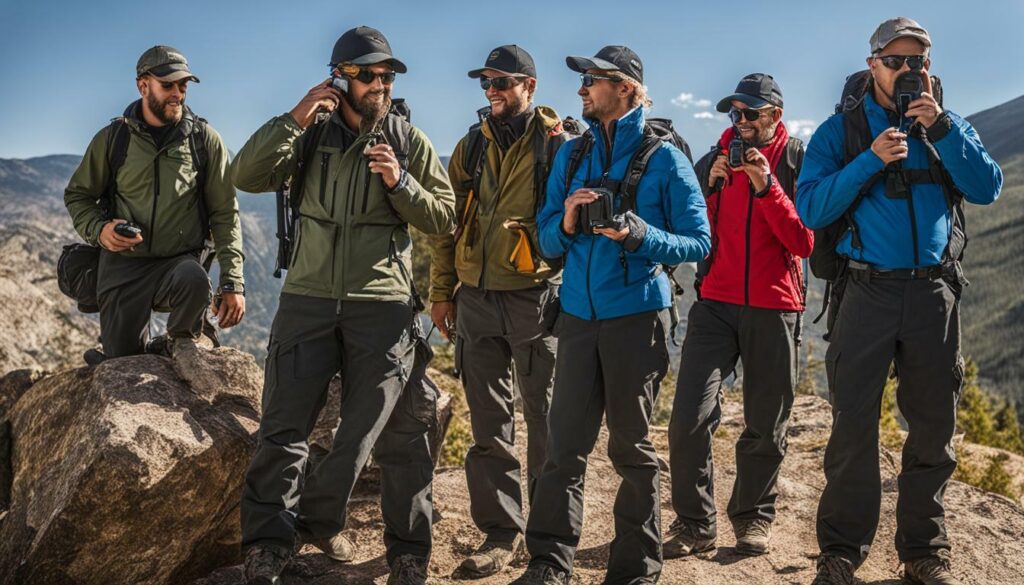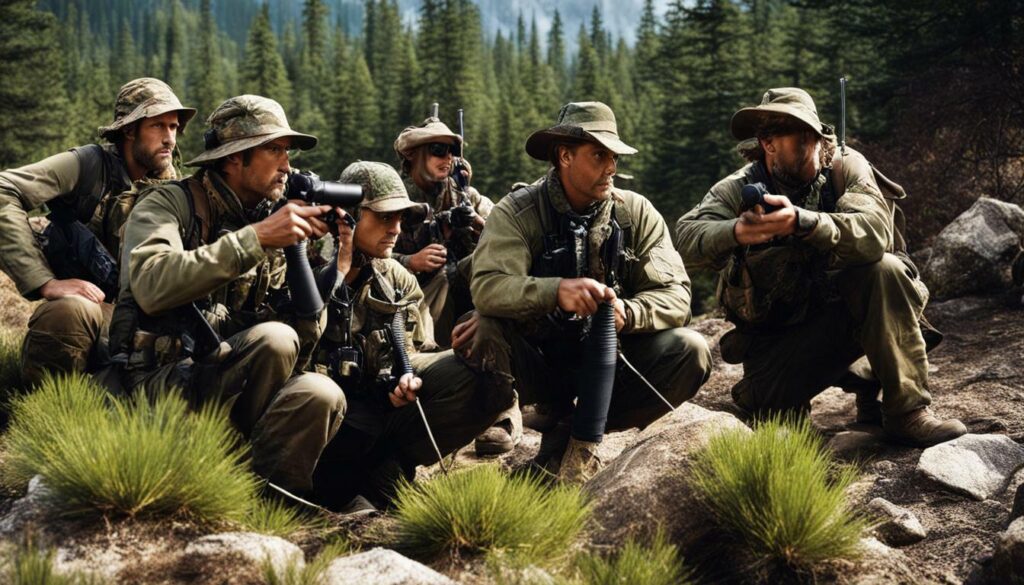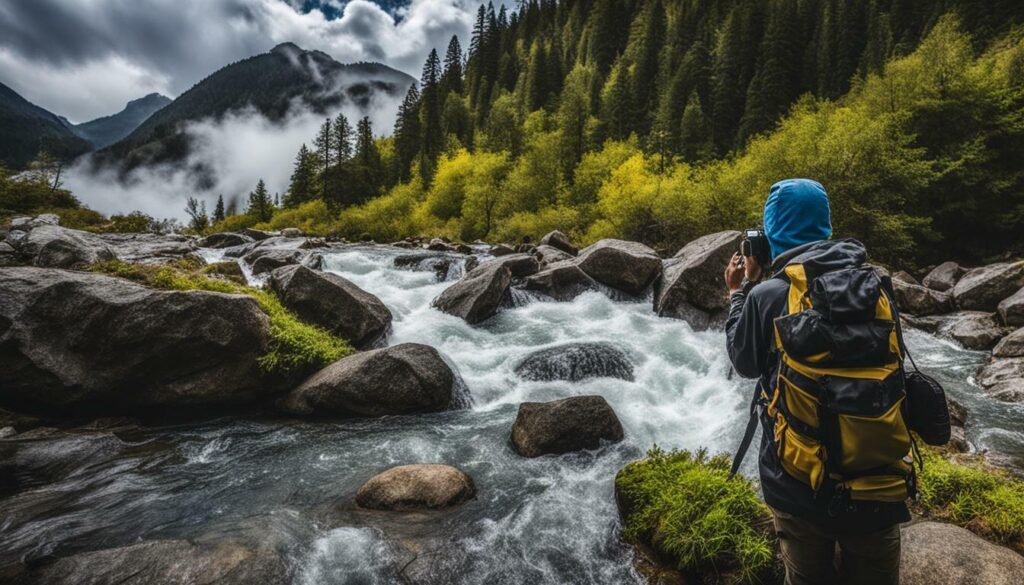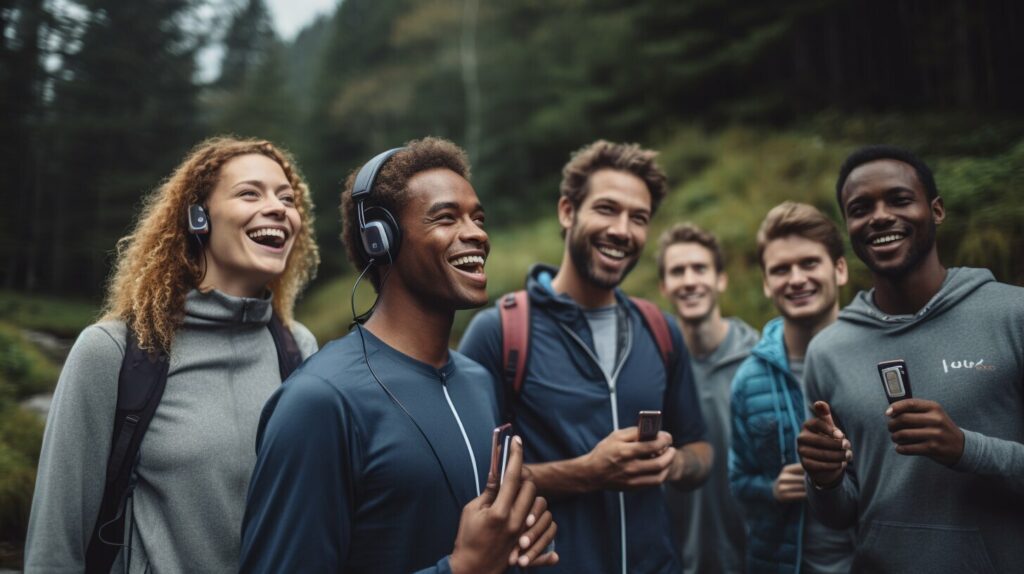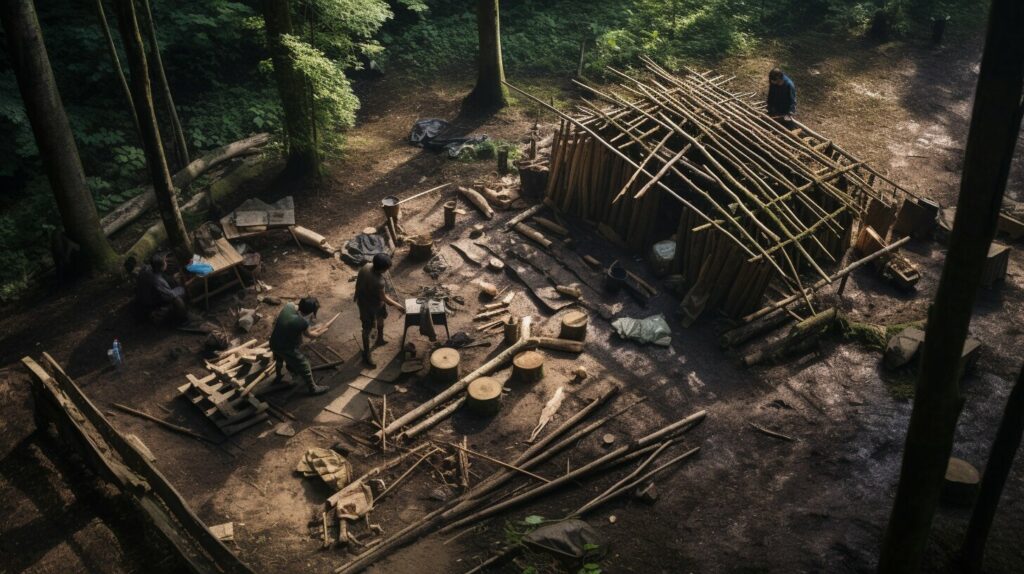Are you ready to hit the trails and embark on your next hiking adventure? Whether you’re a seasoned hiker or a beginner, having the right gear is essential for a successful and enjoyable experience. In this article, I will guide you through the must-have hiking essentials and provide you with a comprehensive checklist to ensure you’re well-prepared. From backpacking checklist to hiking gear, we’ve got you covered!
Before we dive in, let’s take a moment to appreciate the beauty of nature and the excitement of exploring new trails. As an avid hiker myself, I understand the importance of being properly equipped for the journey ahead. So, grab your hiking boots, pack your backpack, and let’s gear up for the next trail! Together, we’ll make sure you have everything you need for a safe and memorable hiking experience.
How to Use These Day Hiking Checklists
When it comes to day hiking, having a checklist is essential for ensuring that you have all the necessary items for a safe and enjoyable experience. The day hiking checklists provided in this article are comprehensive guidelines that cover everything you need to bring on your hike. They include the Ten Essentials, which are marked with an asterisk (*) and should always be included in your pack.
However, it’s important to remember that the exact items on the checklist can be tailored to your specific trip. Factors such as weather conditions, difficulty level, and duration of the hike should be taken into consideration when deciding what to pack. The checklists provided here serve as a starting point and can be adapted to suit your individual needs.
To make it easy for you to reference the checklists, consider printing out the PDF versions and laminating them for durability. Having a physical copy of the checklist will ensure that you don’t miss any important items and can double-check before you hit the trail.


Example Day Hiking Checklist
| Item | Quantity | Notes |
|---|---|---|
| Backpack* | 1 | Choose a size suitable for your hike duration |
| Water bottles or reservoir* | 2 | Carry enough water for the duration of your hike |
| Map and compass* | 1 | Ensure you know how to use them for navigation |
| First-aid kit* | 1 | Include basic medical supplies |
| Knife or multi-tool* | 1 | Choose one with essential tools for emergencies |
| Headlamp or flashlight* | 1 | Include extra batteries |
| Sun protection | 1 | Sunscreen, sunglasses, and hat |
| Extra clothing layers | 1 | Be prepared for changes in weather |
| Food | Varies | Pack nutritious snacks and meals |
| Emergency shelter | 1 | Lightweight tarp or bivy sack |
Remember, this is just a sample checklist to give you an idea of the items you may need. Customize it according to your specific requirements and the conditions of your hike. By using these checklists as a starting point and tailoring them to your needs, you’ll be well-prepared for your day hiking adventures.
What to Bring Day Hiking
When heading out for a day hike, it’s important to pack the right essentials to ensure a safe and enjoyable experience on the trail. Here are the must-have items to include in your hiking checklist:
Hiking Pack
A reliable hiking pack is essential for carrying all your gear. Look for a pack that is comfortable, has multiple compartments for organization, and offers proper support to distribute the weight evenly. Consider the length of your hike and the amount of gear you’ll need when choosing the size of your pack.
Weather-Appropriate Clothing
Dressing appropriately for the weather conditions is crucial to stay comfortable on the trail. Opt for moisture-wicking and quick-drying clothing that will keep you cool in hot weather and warm in cold conditions. Layering is key, so pack a mix of lightweight and insulating garments to adjust to changing temperatures. Don’t forget a waterproof and breathable rain jacket in case of unexpected showers.
Hiking Footwear
Investing in a good pair of hiking shoes or boots is essential for the well-being of your feet. Choose footwear that provides proper support, stability, and traction for the terrain you’ll be hiking on. Make sure to break in your shoes before hitting the trail to avoid blisters and discomfort.
Food and Water
Staying properly fueled and hydrated is crucial during a day hike. Pack enough food to sustain your energy levels, such as trail mix, energy bars, and sandwiches. Carry an adequate supply of water or a hydration bladder to stay hydrated throughout your hike. Remember to drink regularly, even if you don’t feel thirsty.
Navigation Tools
To ensure you stay on the right path, bring essential navigation tools such as a map, compass, and GPS device. Familiarize yourself with the route before your hike and know how to use your tools effectively. It’s also a good idea to have a route description or guidebook handy for additional guidance.
First-Aid Kit
Accidents and injuries can happen on the trail, so always carry a well-stocked first-aid kit. Include items such as bandages, antiseptic wipes, pain relievers, blister pads, and any personal medications. Familiarize yourself with basic first-aid procedures before your hike to be prepared for any situation.
Knife
A versatile knife or multi-tool is a handy item to have for various purposes on the trail. It can be used for cutting ropes, preparing food, repairing gear, and more. Choose a compact and lightweight option that fits easily in your pack.
Ten Essentials
The Ten Essentials are a list of items that are recommended for every hike, regardless of the length or difficulty. These essentials include a headlamp or flashlight, extra clothing layers, fire-starting supplies, sun protection, emergency shelter, extra food and water, and a whistle for communication. Make sure to include these items in your pack to be prepared for unforeseen circumstances.
Day Hiking Checklist
| Item | Reason |
|---|---|
| Hiking Pack | To carry all your gear |
| Weather-Appropriate Clothing | To stay comfortable in changing conditions |
| Hiking Footwear | To provide support and traction |
| Food and Water | To stay fueled and hydrated |
| Navigation Tools | To stay on the right path |
| First-Aid Kit | For emergencies and injuries |
| Knife | For various purposes on the trail |
| Ten Essentials | For preparedness and safety |
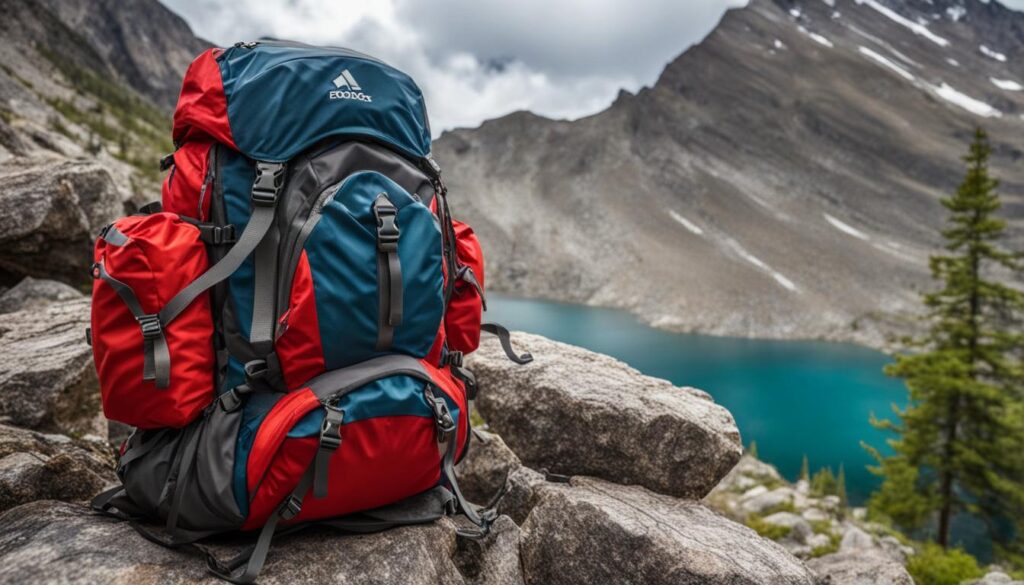

Day Hikes: 2 Hours or Less
For those looking for a quick outdoor adventure, morning hikes or local lake walks are the perfect options. These shorter day hikes are a great way to enjoy nature without dedicating a whole day to the activity. While the duration may be shorter, it’s still crucial to be prepared with the bare-minimum essential items to ensure a safe and comfortable experience.
When embarking on a 2-hour or less day hike, it’s important to consider the specific trail and terrain you’ll be exploring. Regional park trails and local lake walks often offer well-maintained paths that are suitable for beginners and experienced hikers alike. However, it’s still essential to come prepared with the right gear and supplies.
The bare-minimum items you’ll need for a short day hike include a hiking pack to carry your gear, weather-appropriate clothing, proper footwear, food and water, navigation tools, and a basic first-aid kit. It’s also a good idea to bring a map or route description specific to the trail you’ll be hiking. By having these essential items with you, you’ll be ready to enjoy a quick and refreshing outdoor adventure.
| Essential Items for a 2-hour or Less Day Hike: |
|---|
| Hiking Pack |
| Weather-appropriate Clothing |
| Proper Footwear |
| Food and Water |
| Navigation Tools |
| Basic First-Aid Kit |


Remember to always check the weather forecast before heading out, as it will help you determine the appropriate clothing and gear needed for the hike. Additionally, make sure to let someone know your plans and estimated return time, especially if you’re hiking alone.
By preparing with the bare-minimum items and considering the specific trail and terrain, you can enjoy a quick morning hike or local lake walk with confidence. Take in the beauty of nature and recharge your spirit with a short but fulfilling outdoor adventure.
Hiking Gear
When it comes to hiking, having the right gear is essential. From carrying your essentials to ensuring safety and comfort on the trail, choosing the right equipment can make all the difference. In this section, I’ll take you through some of the key gear items that you should consider for your day hike.
Daypack
A daypack is a backpack specifically designed for day hikes. It’s important to choose a daypack that fits well and is comfortable to carry. Look for features such as adjustable straps, padding, and multiple compartments for easy organization. A daypack allows you to carry all your gear, including food, water, clothing, and other essentials, without weighing you down.
Bottle Sling and Waist Pack
If you prefer to have easy access to your water bottle, a bottle sling can be a convenient option. It keeps your water bottle secure and easily accessible while keeping your hands free. A waist pack is another handy accessory for carrying small essentials such as snacks, a phone, or a map. It provides easy access to these items without the need to take off your backpack.
Hydration Pack
A hydration pack is a backpack with a built-in water bladder and a tube for convenient sipping. It allows you to stay hydrated on the go without having to reach for a water bottle. Hydration packs come in various sizes and styles, so choose one that suits your needs and preferences.


Trekking poles can provide added stability and support while hiking, especially on challenging terrain. They help to distribute weight and reduce the strain on your legs and joints. Winter traction devices such as crampons or microspikes are essential for hiking in snowy or icy conditions. They provide traction and prevent slips and falls, ensuring your safety on winter hikes.
In the table below, you’ll find a summary of the essential hiking gear discussed in this section.
| Gear | Description |
|---|---|
| Daypack | A backpack designed for day hikes, carrying all your essentials. |
| Bottle Sling | A strap or holder that securely carries your water bottle for easy access. |
| Waist Pack | A small bag worn around your waist for carrying small essentials. |
| Hydration Pack | A backpack with a built-in water bladder and tube for convenient drinking. |
| Trekking Poles | Poles that provide stability and support while hiking on challenging terrain. |
| Winter Traction Devices | Crampons or microspikes that provide traction on snowy or icy trails. |
Clothing
When it comes to hiking, choosing the right clothing is essential for comfort and protection throughout your adventure. Here is a comprehensive checklist of clothing items to consider:
- Moisture-wicking underwear
- Moisture-wicking shirt
- Quick-drying pants/shorts
- Long-sleeve shirt
- Lightweight fleece or jacket
- Socks suitable for hiking
- Rainwear
- Long underwear
- Warm insulated jacket or vest
- Fleece pants
- Gloves or mittens
- Warm hat
Moisture-wicking underwear and shirts are essential for keeping you dry and comfortable by wicking away sweat from your body. Quick-drying pants or shorts are ideal for unpredictable weather conditions. A long-sleeve shirt provides protection from the sun and bugs, while a lightweight fleece or jacket offers warmth during cooler temperatures.
Proper socks suitable for hiking are crucial to prevent blisters and provide comfort. Rainwear is essential for staying dry in wet weather, while long underwear and a warm insulated jacket or vest help provide insulation in colder climates. Fleece pants, gloves or mittens, and a warm hat are additional items to consider for extra warmth in chilly conditions.
Hiking Clothing Checklist
| Item | Description |
|---|---|
| Moisture-wicking underwear | Keeps you dry and comfortable by wicking away sweat |
| Moisture-wicking shirt | Keeps you dry and comfortable by wicking away sweat |
| Quick-drying pants/shorts | Provides versatility and dries quickly in unpredictable weather |
| Long-sleeve shirt | Provides sun and bug protection |
| Lightweight fleece or jacket | Offers warmth during cooler temperatures |
| Socks suitable for hiking | Prevents blisters and provides comfort |
| Rainwear | Keeps you dry in wet weather |
| Long underwear | Provides insulation in colder climates |
| Warm insulated jacket or vest | Provides additional warmth in chilly conditions |
| Fleece pants | Offers extra warmth in colder temperatures |
| Gloves or mittens | Keeps your hands warm and protected |
| Warm hat | Keeps your head warm in colder weather |
Footwear
Choosing the right footwear is crucial for a comfortable and safe hiking experience. The type of footwear you choose will depend on the terrain and distance of your hike. Here are some options to consider:
Hiking Boots
Hiking boots are a popular choice for longer hikes and more rugged terrains. They provide excellent ankle support, protection, and stability. Look for boots with a sturdy and durable construction, waterproof or water-resistant materials, and a good grip on the soles.
Hiking Shoes
Hiking shoes are a lighter and more flexible alternative to boots. They are great for day hikes on well-maintained trails with less rugged terrain. Hiking shoes offer good traction and comfort, and they are often more breathable than boots.
Trail-Running Shoes
If you prefer a lightweight option with good grip and agility, trail-running shoes are a fantastic choice. They are designed for running on trails but can also be used for hiking. Trail-running shoes are comfortable, breathable, and provide excellent traction.
Hiking Sandals
In hot weather or for less challenging hikes, hiking sandals can be a comfortable and breathable choice. They offer ventilation and allow your feet to stay cool. However, they provide less protection and ankle support compared to boots or shoes.
Comparison of Footwear Options
| Footwear | Pros | Cons |
|---|---|---|
| Hiking Boots | Excellent ankle support and protection, sturdy construction | Heavier and less breathable than other options |
| Hiking Shoes | Lighter and more breathable than boots, good traction | Less ankle support and protection |
| Trail-Running Shoes | Lightweight, excellent grip, and agility | May provide less ankle support and protection on rugged terrains |
| Hiking Sandals | Cool and breathable, suitable for hot weather | Less protection and ankle support |
Food & Water
When embarking on a day hike, it’s crucial to stay hydrated and nourished throughout your journey. Packing the right food and water items will ensure you have the energy and sustenance you need to tackle the trail with confidence.
Water bottles or a reservoir system should be at the top of your hiking checklist. Aim to carry enough water to last the duration of your hike, considering factors such as the weather and intensity of the trail. Staying properly hydrated will help you perform at your best and prevent dehydration.
Alongside water, packing trail snacks is essential. These convenient and lightweight snacks provide a quick source of energy to keep you going. Opt for items that are easy to eat on the go and provide a good balance of carbohydrates, protein, and healthy fats. Some popular trail snacks include energy bars, dried fruits, nuts, and jerky.
| Water bottles | Reservoir | Trail snacks |
|---|---|---|
| Carry enough water for the duration of your hike | A convenient way to carry and drink water on the go | Provide quick energy and sustenance while hiking |
| Consider weather conditions and intensity of the trail | Ensure proper hydration throughout your hike | Choose items that are lightweight and easy to eat |
| Avoid dehydration and perform at your best | Look for a balance of carbohydrates, protein, and healthy fats |
Navigation
When embarking on a hiking adventure, having the right navigation tools is essential to stay on track and ensure a safe journey. Whether you’re exploring familiar trails or venturing into unfamiliar territory, a combination of traditional and modern navigation aids can help you navigate with confidence.
Map and Compass
A topographic map and a reliable compass are must-haves for any hiker. These tools allow you to identify landmarks, determine your location, and plot your route. Familiarize yourself with map reading skills and learn how to use a compass effectively to navigate through challenging terrains.
Route Descriptions and Guidebooks
Route descriptions and guidebooks provide valuable insights into specific hiking trails. They offer detailed information about the terrain, difficulty level, and points of interest along the way. Utilize these resources to plan your hike and gain a better understanding of the route you’ll be taking.
Altimeter Watch, GPS, and Smartphone Apps
Altimeter watches can provide valuable elevation data, which is particularly useful in mountainous areas. Additionally, GPS devices and smartphone apps offer real-time navigation features, allowing you to track your progress, mark waypoints, and even access pre-loaded maps. Just remember to bring extra batteries or a portable charger to ensure your devices stay powered throughout your hike.
| Navigation Tools | Pros | Cons |
|---|---|---|
| Map and Compass | Reliable even in remote areas, no battery required | Requires map reading and compass skills |
| Route Descriptions and Guidebooks | Provides detailed information about specific trails | May not include up-to-date information |
| Altimeter Watch | Provides accurate elevation data | Additional weight and cost |
| GPS and Smartphone Apps | Real-time navigation, access to pre-loaded maps | Relies on battery life and may lose signal in remote areas |
Conclusion
As I wrap up this article, I want to emphasize the importance of being well-prepared with the right gear for your day hike. By following the comprehensive checklist provided in this guide, you can ensure that you have all the essential items necessary for a safe and enjoyable outdoor adventure.
Having a hiking gear list and day hike checklist is crucial for outdoor safety. It ensures that you don’t overlook anything important and helps you stay organized. Remember to check off each item on the list before you hit the trail, and feel free to tailor it to your specific needs and hiking conditions.
When it comes to essential hiking gear, it’s not just about being comfortable; it’s about prioritizing your safety. From clothing and footwear to navigation tools and emergency supplies, every item on the checklist plays a vital role in your overall hiking experience.
So, whether you’re a seasoned hiker or new to the trails, make sure you have your hiking gear list handy. It will give you the confidence to explore the great outdoors while staying safe and prepared. Happy hiking!
FAQ
Can I customize the hiking checklist to suit my needs?
Yes, the checklists provided are meant to be used as guidelines. The Ten Essentials are items that should always be included, but you can tailor the rest of the items based on factors like weather, difficulty, and duration of your hike.
Should I print out the checklists?
Yes, it’s recommended to print out the PDF versions of the checklists for easy reference. You can also consider laminating them for durability.
Are these checklists suitable for shorter hikes as well?
Yes, there is a checklist specifically designed for short day hikes that are 2 hours or less in duration. It covers the bare minimum essential items you should have for a safe and comfortable experience.
What are the different options for carrying gear on a day hike?
The article covers various options for daypacks, including bottle slings, waist packs, and hydration packs. Choose the one that suits your comfort and storage needs.
What kind of clothing should I wear for hiking?
The clothing checklist provides a comprehensive list of items to consider, including moisture-wicking underwear and shirts, quick-drying pants or shorts, long-sleeve shirts for sun and bug protection, lightweight fleece or jackets for warmth, suitable hiking socks, and additional items for rainy or cold weather.
What type of footwear is best for hiking?
The article discusses different options such as hiking boots, hiking shoes, trail-running shoes, and hiking sandals. The choice should be based on the terrain and distance of your hike.
How much water should I carry for a day hike?
It’s important to stay hydrated, so the article provides guidance on the recommended amount of water based on the length and intensity of your hike. Don’t forget to pack enough water to keep yourself hydrated throughout the day.
Do I need navigation tools for day hiking?
Yes, carrying navigation tools like a map and compass is always a good idea, especially when hiking in unfamiliar areas. The article also explores additional aids such as route descriptions, guidebooks, altimeter watches, GPS devices, and smartphone apps.
How can I ensure I’m properly prepared for a day hike?
By following the comprehensive checklist provided in this article, you can make sure you have all the essential items for a safe and enjoyable hiking experience. Check off each item on the list and tailor it to suit your specific needs and hiking conditions.
